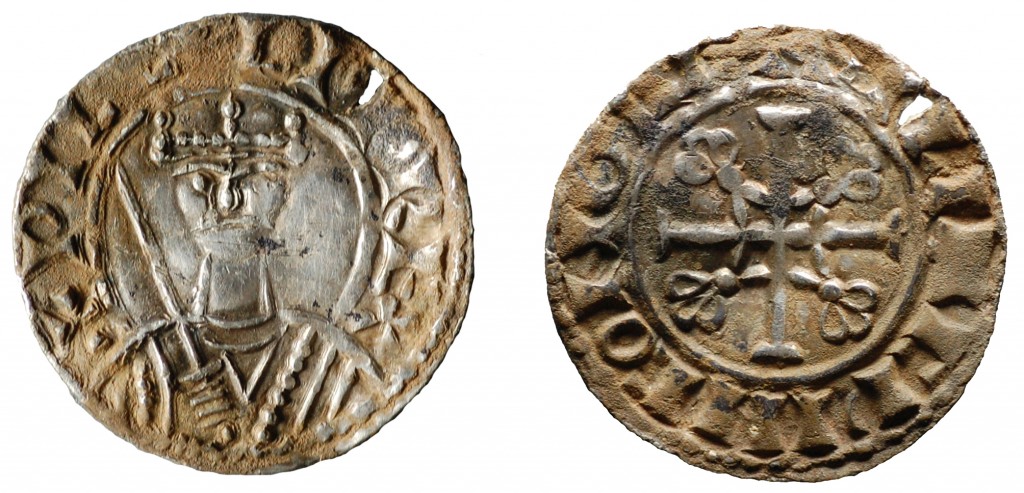A metal detector enthusiast has discovered a unique silver penny issued by William the Conqueror in a field north of Gloucester. Maureen Jones and two other women from the Taynton Metal Detecting Club were exploring the open field last November when Ms. Jones’ detector went off. She recognized that it was a hammered silver coin, but didn’t realize that was the face of the Norman bastard himself staring back at her from the obverse.
She reported it to the Portable Antiquities Scheme where Dr. John Naylor, PAS’ National Finds Advisor for Medieval and Post-Medieval Coinage, identified it as a William I silver penny minted between 1077 and 1080 in Gloucester. It’s that minting that makes it unique. There are no other coins extant that date to that period from William’s Gloucester mint. This single silver penny plugs the gap and proves that the mint was in operation through the entire reign of William I.

On the obverse is a crowned bust of William holding a sword bearing the inscription PILLELM REX, i.e., William the King. That initial P isn’t actually a P, but rather the Old English letter wynn which is pronounced “w” but represented by a P in Latin script after the original P-shaped rune.
On the reverse is a cross pattée (that’s a cross where the arms are narrow in the center then broaden out at the edges) with fleurs-de-lis at angles between the arms. It’s inscribed around the edges with [S]ILIACPINC ON GLI, meaning Silacwine of Gloucester, the name of William’s Gloucester moneyer. This is the first evidence of Silacwine minting coins during this period. His previous output stopped at 1077, so this coin extends his years of operation through about 1080.
The penny is in excellent condition. The PAS experts categorize it as hardly worn/extremely fine, and you can tell from the weight that it hasn’t been worn down much at all. The legally required weight of a silver penny at this time was 1.3 to 1.6 grams. This one weighs 1.31 grams. Silacwine wouldn’t have lasted long, at least intact of body, if he had been discovered minting underweight coins. Shorting coins was a crime punished by mutilation or death, which is why every coin had the name of the moneyer clearly posted on the reverse side.
William I’s reign was a heyday of coin production. He had 70 mints going at the peak. By the time his third son William II took the throne in 1087, there were just over 50 mints active, and by the time his fourth son Henry I took over after William II’s death in 1100, only 34 mints were still active.
What an odd place to issue a coin.
Wow, that’s a very cool find, thanks for sharing the story. There’s a metal detector enthusiast who is going to be even more enthusiastic from here out.
For serious, Englanders that aren’t out in some field with a metal detector every weekend are obviously silly. People just stumble across cool finds every other day there!
Heh. Nice catch. Great story, though.
:thanks: